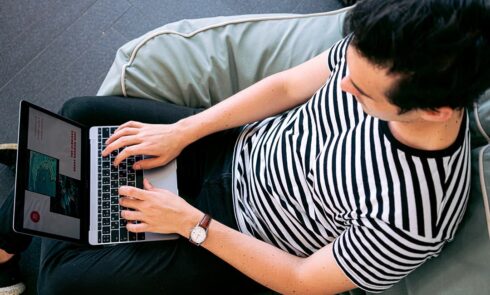Users who are interested in vector graphics often come across such a program as Affinity Designer. The creators promise a large number of useful functions on their official website, but for many people such a utility may seem complicated and inconvenient at first glance. The following review will help you to determine the functionality and decide whether you should download Affinity Designer to your device.
Installing the program
This process is quite simple: after opening it in “Programs”, easily drag and drop the icon – it’s done. During the launch, the system will ask you to enter your email address, as well as a key, after which the program is activated. It is worth noting that Affinity Designer launches quite quickly, the utility is characterized by good responsiveness, it very rarely crashes and does not hang.
Workspace
Affinity Designer has a minimal number of panels and greets the user with a dark interface. However, you can change the color scheme in the settings if you want – both the workspace and the interface.
There are not many settings, but all of them are necessary for work:
- Performance;
- Interface settings;
- Resetting default styles, fonts and brushes;
- Hotkeys;
- Profile colors;
- Advanced settings;
“Personas” – this is one of the important chips of the program, which are modes of work for different tasks. There are three modes: the popular pixel mode, as well as vector and, of course, export. By switching modes, you can change the panels, as well as the toolbox, which is very convenient.
Vector toolkit
Everything in this area is pretty standard: pencil, Pentul in different modes, gradient, corner rounding, as well as shapes and brush. Pentul turned out to be more intuitive, however, and many users find it much more pleasant to work with it than with the same Illustrator. The top panel allows you to switch between the main working modes, and you can also press Command + Alt to do so. Unlike the chandelier, where a specific action has its own tool, here Pentul is only one.
Such a tool as Point Transform showed itself quite well. With its help you can scale and rotate the created object around some point. It also helps to create various shapes: a heart, a drop, a star, a rectangle. All of them can be adjusted to a certain size, the total number of rays and so on. It should be noted that editing via Pentul is not possible while the shape is in this mode. Editing requires conversion to curves.
So, what we have
- An excellent Pentul that is customizable for a variety of modes of operation;
- A large number of customizable shapes;
- Customizable and snazzy vector brushes that are calligraphic, as well as emulating acrylic, as well as charcoal and the popular watercolor. Good stabilization is available;
- Boolean operations, alignment function;
- Lots of Corner tool capabilities;
- Point Transform;
- Symbols similar to those in Illustrator;
- Possibility to create a drawing by means of isometric projection.

